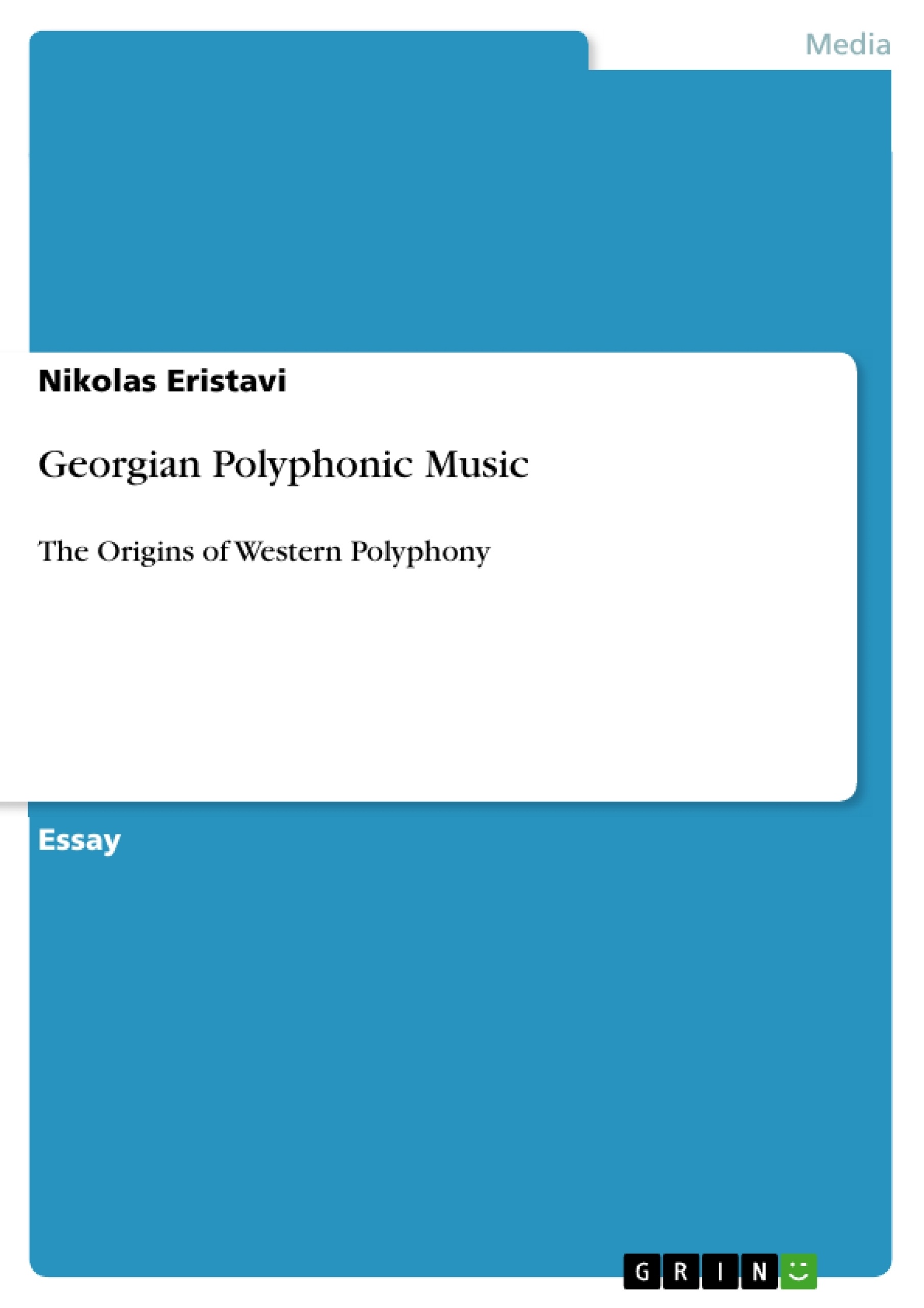Language and song are the most predominant markers that define cultural identity. Both allow an individual and a society to create not only a composite image of the world through word, but also interpret it and express it through an art as timeless as music. Cultures around the world have formulated individual music styles, instruments, and sounds to be able to express the mindset within their socio-cultural identities. From the Americas, to Africa and especially in Europe and Asia, the ethnic groups and peoples who populated the land formulated their own sense of self through the art and song they were able to produce. Nestled on the Eastern coast of the Black Sea, the country of Georgia can trace its civilization back into the stories out of Greek Antiquity. Made famous to the Western world of the past through the story of Jason and the Argonauts, the land became known as one plentiful in gold and wine. Although the lands were materially abundant in the stories of the Greek poets, the peoples of the Caucasuses found their wealth through the culture they cultivated over the decades.
Inhaltsverzeichnis (Table of Contents)
- Language and Song
- Georgian Polyphony
- The Early History of Georgian Polyphony
- Regional Variations in Georgian Polyphony
- The Influence of Georgian Polyphony on Western Music
- The Transmission of Georgian Polyphony to the West
Zielsetzung und Themenschwerpunkte (Objectives and Key Themes)
This essay aims to explore the development of Georgian polyphony, a distinctive musical tradition that has shaped the cultural identity of Georgia. It examines the historical context of this musical style, its unique features, and its influence on the development of Western music.
- The role of polyphony in defining Georgian cultural identity
- The historical development of Georgian polyphony from pagan rituals to Christian hymns
- Regional variations in Georgian polyphonic styles
- The influence of Georgian polyphony on the development of Western music
- The transmission of Georgian musical traditions through trade and religious exchange
Zusammenfassung der Kapitel (Chapter Summaries)
The essay begins by discussing the importance of language and song in shaping cultural identity, introducing the concept of Georgian polyphony as a defining element of Georgian culture. It then delves into the historical development of Georgian polyphony, tracing its origins from pagan rituals to its integration into Christian hymns. The essay highlights the unique features of Georgian polyphony, including its distinct tuning system and the use of vocables. It also explores regional variations in Georgian polyphonic styles, examining the differences between Eastern and Western Georgian musical practices. Finally, the essay discusses the influence of Georgian polyphony on the development of Western music, highlighting its impact on the emergence of polyphonic music in Europe. The essay concludes by considering the role of trade and religious exchange in the transmission of Georgian musical traditions to the West.
Schlüsselwörter (Keywords)
Georgian polyphony, cultural identity, music history, regional variations, vocables, Christian hymns, Western music, influence, transmission, trade, religious exchange.
- Quote paper
- Nikolas Eristavi (Author), 2011, Georgian Polyphonic Music, Munich, GRIN Verlag, https://www.grin.com/document/174264




